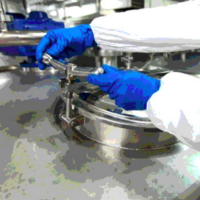Chemical Hazards in Circular Food Systems

Chemical hazards that are present in the environment and agriculture may contaminate food in a circular economy, according to a recent literature review. The researchers who conducted the review emphasize the importance of identifying potential food hazards that may accumulate in a circular food economy and taking precautionary measures to prevent public health risks.
Since the goal of transitioning toward sustainable food systems that minimize waste is increasingly urgent, the review was conducted to identify potential hazardous resources that are used in agriculture, horticulture, and animal feed that may contaminate the food supply in a circular economy. The review identified heavy metals, as well as human and veterinary pharmaceutical and personal care products, as the greatest source of chemical contamination risk in a circular food economy. Poultry manure, in particular, was found to be a vehicle for veterinary medicine residues in soil. Biosolids were also identified as a source of pharmaceuticals and personal care products found in agricultural soil; the accumulation of such contaminants may affect plant uptake.
The review notes that most of the existing information on the presence of hazards in industrial sewage sludge is related to heavy metals and organic contaminants that require control measures to prevent soil contamination. The authors highlight the need to develop an affordable, environmentally friendly recycling technology that can remove metals from industrial sludge so that the waste can be used as fertilizer without posing a risk to food safety. The review also mentions that some of the metals found in sludge are beneficial to plant and human health—such as zinc, copper, and nickel—in appropriate concentrations. Further research is required to establish the relationship between the levels of dietary minerals in soil and crops to determine safe levels for application of sludge and manure in agriculture and horticulture, as well as to achieve high-quality compost that ensures food safety.
Although limited research exists on the chemical hazards posed by the reuse of crop residues and biochar in agriculture, the review was able to determine that many chemical hazards may migrate into the edible parts of plants. The review also found that, when crop residues are directly applied as soil fertilizer, chemical hazards that are present in the crop residues may accumulate in the soil and crops grown in the soil. However, the use of crop residues in the form of biochar may decrease the hazards that are present in the treated soil. The main hazards associated with the use of crop residues are heavy metals and pesticides, as well as mycotoxins in cereals and plant toxins in legumes and potatoes. Although preliminary research shows that counter measures can be taken to effectively reduce the food safety risks of using crop residues in agriculture, further research is required to fill the knowledge gaps related to the levels of food safety hazards in crop residues, the persistence of such hazards, their accumulation in the soil, and their subsequent transfer to crops.
Additionally, while there is limited research that exists regarding chemical hazards in byproducts used as animal feed, the review found that a variety of chemical hazards can be present in both plant- and animal-based byproducts. The authors state that, in general, chemical hazards may be present at higher levels in byproducts than in raw products. Some byproducts that may potentially contain high levels of chemical hazards are fish meal and oil, and feathers or eggs from laying hens that are treated with antibiotics.
Looking for a reprint of this article?
From high-res PDFs to custom plaques, order your copy today!







